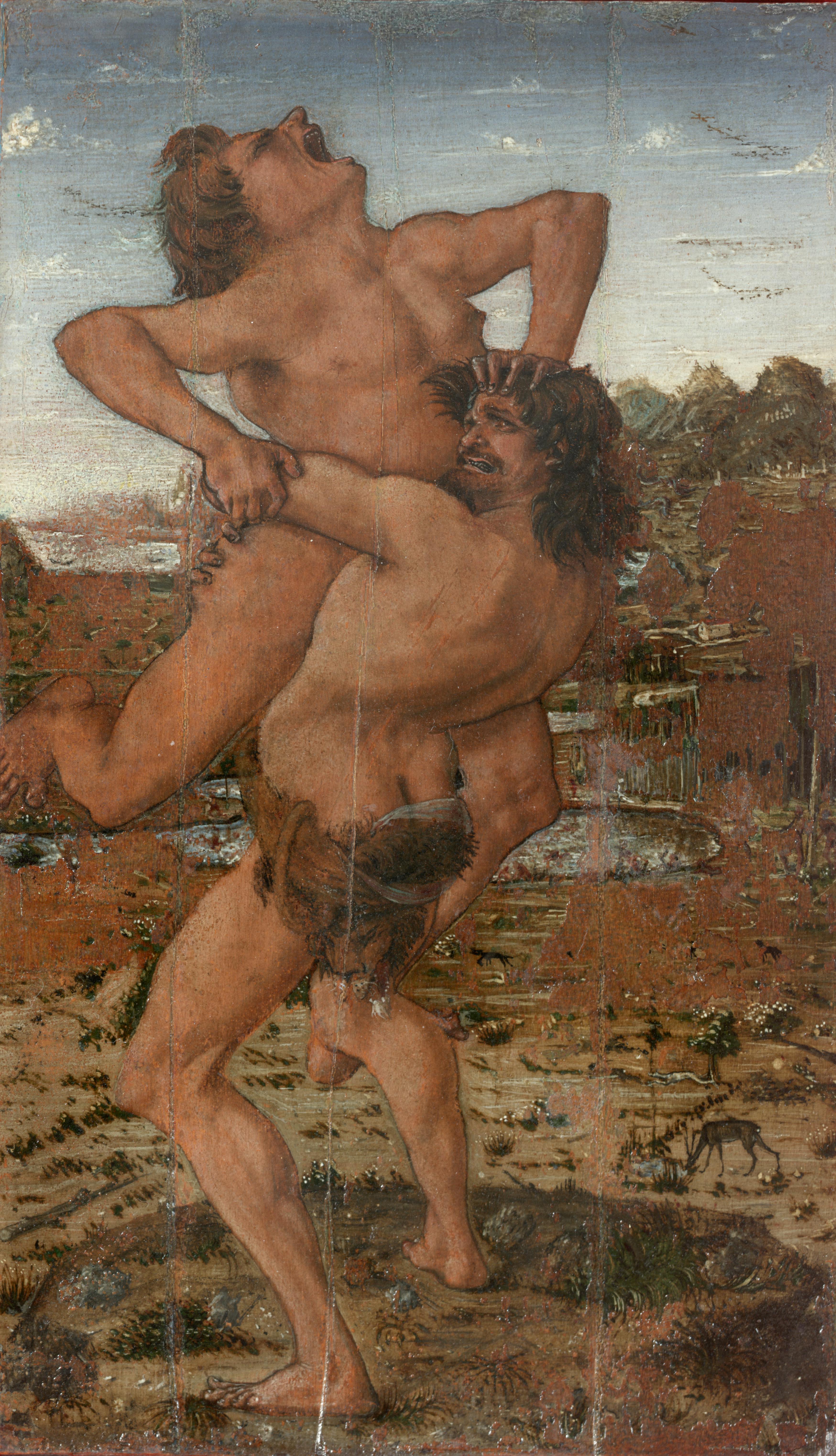Hercules and Antaeus
Antonio Benci known as Antonio del Pollaiolo (Florence 1431-Rome 1498)
Greek mythology tells that Heracles, or Hercules, in one of his twelve labours defeated Antaeus, a giant of superhuman strength who slaughtered men. The power of Antaeus derived from his contact with the earth, since he was Gaea’s son, the goddess of the earth. For that reason, Hercules, to weaken the giant, lifted him up and killed him with the strength of his arms. The scene effectively recounts the moment before Hercules' victory, with Antaeus screaming as he tries in vain to free himself from the deadly embrace, and Hercules, with his gravity center shifted back to support his weight and his lion's fur pulled down over his hips, contracting all the muscles of his body and face in a final effort. These details prove the in-depth knowledge of human anatomy of the author, Antonio del Pollaiolo, achieved through study of reality and drawing practice.
The figures of Hercules and Antaeus are placed in the foreground on a plateau, beyond which opens up an airy landscape seen from above. It is an expedient taken from Flemish painting that amplifies the spatial depth of the scene. The distance between the group of Hercules and Antaeus and the landscape behind is measured by the difference in size, which is evident when comparing the figures in the foreground and that of the deer drinking at the fountain, on the bottom right, an optical effect whereby what is distant appears smaller to us.
Edifying and allegorical meanings were attributed to the myth of Hercules during the Middle Ages and Renaissance, so much so that it was also depicted in religious and civic contexts. Hercules represented virtue, the victorious hero against powerful and unjust creatures, thus making him the emblem of freedom and greatness.
The Uffizi painting was executed by Antonio del Pollaiolo together with another panel of similar size depicting Hercules and the Hydra (inv. 1890 no. 1478). The original destination of the work is unknown, but the fine workmanship of the two panels and their small size suggest that they might have been part of the furnishings of a small noble office.
The two Uffizi panels were documented in Florence in 1609 among the collection of Benedetto di Bartolomeo Gondi. At that time, the two small paintings formed a closable diptych, similar to a book. It is not known when they became part of the collections of the Grand Dukes of Tuscany. They were in the Pitti Palace in 1794 and came to the Uffizi in 1798.
During the Second World War, the two panels were stolen by the German army and taken to Germany. After a long search, they were found in 1963 in Pasadena (USA) by Rodolfo Siviero and have been displayed at the Uffizi since 1975.
A. Tartuferi, in La stanza dei Pollaiolo, a cura di A. Natali e A. Tartuferi, Firenze 2007, pp. 114- 117;A. Galli, Antonio e Piero del Pollaiolo. “Nell’argento e nell’oro, in pittura e nel bronzo…”, a cura di A. Di Lorenzo e A. Galli, Milano 2014, pp. 192-196
Hercules and the Hydra
Antonio Benci known as Antonio del Pollaiolo o del Pollaiuolo (Florence 1431-Rome 1498)
